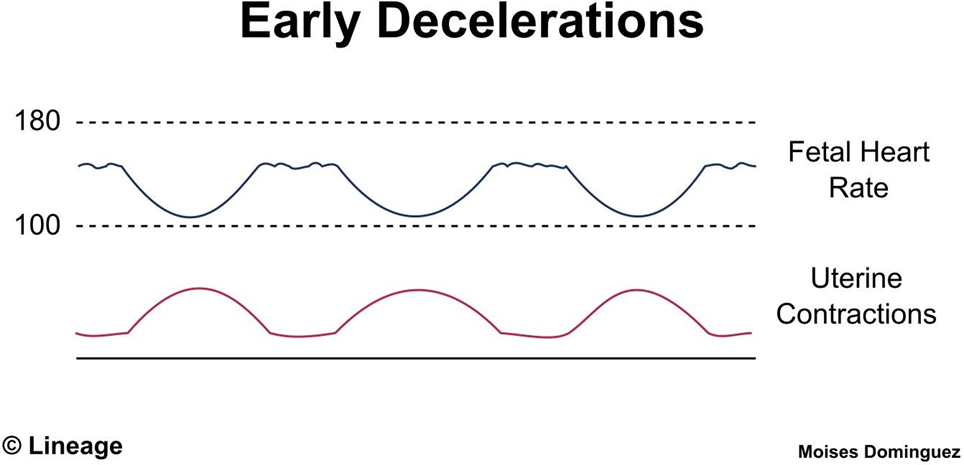A nurse is caring for a client who is in labor and receiving electronic fetal monitoring. The nurse is reviewing the monitor tracing and notes early decelerations. Which of the following should the nurse expect?
Head compression
Fetal hypoxia
Abruptio placentae
Postmaturity
The Correct Answer is A
A.
A. Early decelerations are typically benign and occur in response to head compression during contractions. They mirror the uterine contractions and are not associated with fetal distress.
B. Fetal hypoxia is associated with variable or late decelerations, not early decelerations.
C. Abruptio placentae is a medical emergency characterized by premature separation of the placenta from the uterine wall, which can lead to late decelerations due to fetal hypoxia.
D. Postmaturity is a term used to describe a pregnancy that extends beyond 42 weeks gestation and is not directly related to fetal heart rate patterns during labor.

Nursing Test Bank
Naxlex Comprehensive Predictor Exams
Related Questions
Correct Answer is C
Explanation
A. Hydrogen peroxide is not recommended for cleaning surfaces contaminated with blood as it is not as effective as other agents and may not adequately disinfect surfaces.
B. Isopropyl alcohol can be effective for disinfecting surfaces contaminated with blood, but it is less effective against certain bloodborne pathogens like hepatitis B virus compared to chlorine bleach.
C. Chlorine bleach is an effective agent for cleaning surfaces contaminated with blood and is recommended by CDC guidelines for disinfecting against bloodborne pathogens.
D. Chlorhexidine is primarily used as a skin antiseptic and is not typically used for cleaning surfaces contaminated with blood.
Correct Answer is A
Explanation
A. Hypotension occurs because hypermagnesemia causes vasodilation, which lowers blood pressure. Magnesium acts as a smooth muscle relaxant, decreasing vascular resistance and contributing to hypotension. This is a common clinical finding when magnesium levels exceed the normal range.
B. Tachycardia is not expected with hypermagnesemia. Elevated magnesium levels depress the heart's electrical activity, leading to bradycardia (slow heart rate) instead of tachycardia.
C. Muscle cramps are typically associated with hypomagnesemia, which increases neuromuscular excitability. In hypermagnesemia, neuromuscular function is suppressed, leading to muscle weakness rather than cramps.
D. Hyperreflexia is a symptom of hypomagnesemia, not hypermagnesemia. In hypermagnesemia, neuromuscular activity is depressed, resulting in diminished or absent deep tendon reflexes
Whether you are a student looking to ace your exams or a practicing nurse seeking to enhance your expertise , our nursing education contents will empower you with the confidence and competence to make a difference in the lives of patients and become a respected leader in the healthcare field.
Visit Naxlex, invest in your future and unlock endless possibilities with our unparalleled nursing education contents today
Report Wrong Answer on the Current Question
Do you disagree with the answer? If yes, what is your expected answer? Explain.
Kindly be descriptive with the issue you are facing.
